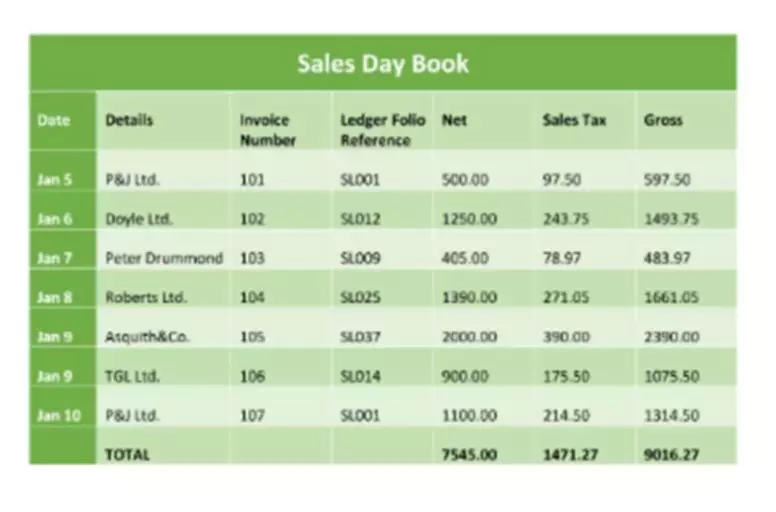Content

With that said, the PCM regulations do address payments made by the Buyer to Seller and attributed to a contract. To employ the PCM, a contract must describe how to determine a “completion factor” that determines how much income the contractor has earned up to that point. The revenues earned and the costs of these revenues are equal to the completion factor times the total contract revenues and costs, respectively. GAAP doesn’t permit a contractor to determine revenue based on cash receipts. Some companies need to have a way to recognize a portion of the revenue earned from a long-term contract before the project has been completed. In such cases, they generally employ the percentage-of-completion method of accounting, which is a way to determine what percentage of the revenue of the entire contract should be accrued during a specific time period. The percentage of completion method is an internal accounting process that can differ from the reality on the jobsite.
- The percentage-of-completion method is the more commonly used approach and is appropriate in many situations.
- Construction costs plus gross profit earned to date are accumulated in an asset account , and progress billings are accumulated in a liability account .
- Calculating cost-to-retail percentage excluding markups but including markdowns.
- In contrast to the completed-contract method, percentage of completion allows contractors to recognize revenue as they earn it over time.
- The method recognizes revenues and expenses in proportion to the completeness of the contracted project.
- When the amount billed to date is more than the revenue that is recognized by the percentage of completion method, that’s called overbilling.
A Schedule of Values is an essential tool used in construction project accounting that represents a start-to-finish list of work… In the construction business, everything comes down to the contract. From first East he was trying to stay under $60k and he added $10100 which he admitted on his text message. Join the free certificate course to learn the foundations of financial management and accounting in construction, taught by the man who wrote the textbook . Measure the extent of progress toward completion, using one of the methods described above. The look-back method does not apply to a terminated contract that is subject to this paragraph .
Who must use percentage of completion method for tax purposes?
This percentage of completion method recognizes revenue and income related to long-term projects. The justification relies on the matching principle in accounting, where revenues and expenses are matched in the applicable accounting period. Under the newer guidance, contracts that transfer control over time would use a percentage of completion to determine how much of the performance obligation’s price is earned. Under the five-step model, this requires contractors first to identify the performance obligations in the contract and allocate a transaction price to each one. Again, that would mean the percentage of completion is applied to a performance obligation rather than to a contract price. A primary advantage of the percentage-of-completion method over the completed-contract method is that it reports income evenly over the course of the contract. Since the percentage-of-completion is used on projects that span over several financial periods and multiple fiscal years, this prevents the appearance of sudden large swings of income on the profit-and-loss (P&L) statement.
The Accounting Percentage Completion Method for Billing – Chron
The Accounting Percentage Completion Method for Billing.
Posted: Wed, 13 Jul 2016 21:39:03 GMT [source]
The https://www.bookstime.com/ is used for long-term construction and other projects. This method allows you to recognize the revenues and expenses periodically, during the contract period, prior to the completion of the project/contract. As a result, you can estimate the project’s future costs at the end of each reporting period in order to estimate the total gross profit to be earned on the project. GAAP and the Internal Revenue Service don’t agree on all aspects of the percentage of completion method. Under GAAP, you report the period’s profits based on earned revenues minus the costs of these revenues, using the appropriate input or output measure. The IRS allows contractors to deduct expenses as incurred, which might be in a different period than the one calculated via the GAAP methods. Therefore, the GAAP and IRS project profits might differ in a contract period, although they should coincide by the end of the project.
Accounting for Construction Business
So it shows revenues year by year than to just all of the sudden have one large inflow at the end where the project was completed. Company A has contracted with Company Z to upgrade their customer information system. The total value of the contract with Company Z is worth $22 million, and the project is expected to take three years to complete. Company Z’s internal estimate indicates the project will cost $15 million to complete. The first milestone payment from Company A does not occur until nine months into the project, but Company Z would like to recognize revenue on their income statement in their next annual report. At that point in time, Company Z would have expended $5 million in costs. While the PoC revenue recognition method can be extremely beneficial for many organizations, it’s not without its limitations.
As mentioned, in order for the method to be successful, the company must be able to estimate revenues, costs, and the total length of time of the project. If your business model is prone to wild fluctuations in materials costs, or your projects frequently run well beyond estimations, it may be better to stick with a more definitive revenue recognition method. The percentage of completion method offers a work-in-progress method of evaluating revenue and expenses in long-term contracts. The completed-contract method is different from the percentage of completion method given that expenses and revenues are calculated after the completion of a project. Percentage of completion is an accounting method of work-in-progress evaluation, for recording long-term contracts. GAAP allows another method of revenue recognition for long-term construction contracts, the completed-contract method.
Percentage of completion method
Losses are recognized in the year when they are discovered, the same way as for the completed contract method. The balance sheet presentation is the same as in the completed contract method. Under Sec. 460, taxpayers with long-term construction contracts must generally use the percentage-of-completion method to determine their reportable income. The percentage-of-completion method recognizes revenues and expenses on long-term contracts as a percentage of the work performed during the period. One glaring disadvantage of the percentage of completion method is that it can be easily abused. Companies or accountants that do not adhere to proper ethical standards can choose to transfer expenses or income between different periods, thereby understating or overstating different values to boost short term results.
Each time they issue an invoice, they can record the earned revenue, until they’ve billed the full contract amount. Use the Percentage Completion method with construction based projects that extend over the course of several years. Furthermore, many accountants prefer the percentage completion accounting over the Completed Contract Method. Because the projects are usually long term lasting several years, it estimates completion for the company.
When Do We Use the Percentage of Completion Method?
The work in progress report provides a summary of the information used in the percentage of completion calculation. It includes total revised contract amount, total costs to date, percent complete based on cost, amount billed to date, and the difference between the amount billed and the percent of revenue that can be recognized. Instead of costs, percentage of completion can also be calculated using units or labor hours, depending on the nature of the business. The important thing to remember is that contractors must be consistent in how they calculate the percent complete. In contrast with percentage of completion, the completed contract method is used to recognize project revenue and costs only when the contract is complete.

